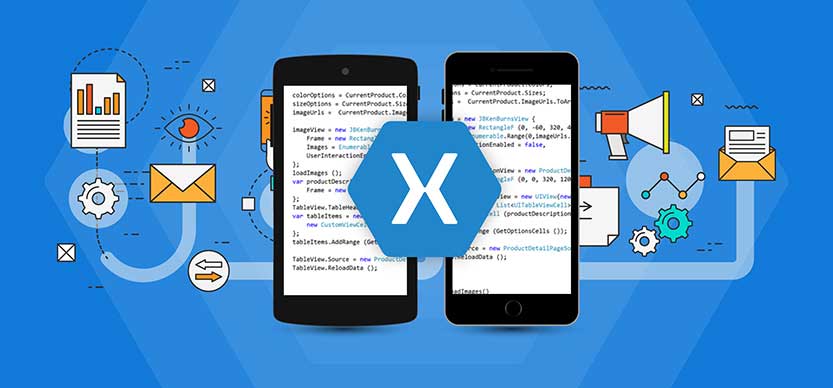
In the last one decade, there has been a tremendous change in the way enterprise run their business. The phenomenal reach of mobile devices has encouraged enterprise to make use of mobile apps to increase their business productivity. Amidst all the tools that these developers use to ensure a rapid development of engaging apps, Xamarin has emerged as the most preferred one. It is the only platform, which enables developers to have a reach to more than 2.6 billion mobile devices. No wonder, a large number of reputed companies like Honeywell, Kimberly-Clark, 3M have shown trust in Xamarin to such an extent that it is called the future of enterprise mobility by the leading industry experts. So, let us have a look at the top six reasons for which Xamarin has immense scope in rendering enterprise mobility in the coming years.
1. Winning Native Experience Users love native apps that are for a specific device because they deliver speed, consistency, security, and a top-notch performance. In short, native apps offer a great user experience. Xamarin helps app developers to built native iOS and Android apps without much effort. For native iOS apps, it ships the native app bundles on the app store; and ships Android package for Android apps. However, it is not only for Smartphones but also includes Android wearable. It also facilitates app developers to develop native apps for Mac and Windows. Xamarin.Forms consist of more than three dozen controls and layouts.
2. Expand use of apps without the Internet In the 21st century, when everything seems interconnected, there is no need to have apps that can run without the Internet. However, when businesses expand, they sometimes reach to new areas where Internet connectivity is poor or negligible. In such a scenario, their apps may stop functioning and will jeopardize the data sharing, collaboration or business operations. To overcome this evolving need, Xamarin offers a perfect solution to develop apps that have a reduced dependence on the Internet to function smoothly. It is possible for the app developers to synchronize offline data in Xamarin forms using the Microsoft’s Azure mobile services. Moreover, the process of synchronization is very easy. It is applicable for both Android and iOS mobile devices. Remember, Microsoft has recently acquired Xamarin to expand its empire beyond Microsoft Windows.
3. Sharing and Collaboration There is no need to do things from scratch as Xamarin enables app developers across the world to share and collaborate with each other in a seamless manner. It has the Xamarin Component store launched in 2013 where the app developers can have easy access to innumerable UI controls, eye-catching themes, graphs, cloud services, charts, and many more components. The store integrates with Xamarin Studio and Visual Studio. Thus, the developers can add them to their app within a matter of few seconds. Recently, Microsoft has unveiled the Azure storage client library for mobile app developers so that they can easily integrate Xamarin apps to the Microsoft’s cloud storage. This will indeed facilitate more ease in data sharing.
4. Speed up app development projects In a competitive business environment, a delay of even a single day can mean a lot. Thus, Xamarin offers consulting services to the developers who want to build powerful apps at a terrifying speed. Quickly, a team of professionals starts providing the much-needed help. They not only guide through every stage of the app cycle development but also achieve by leveraging the power of Xamarin. They ensure that developers seeking their services are building high-quality apps. It is because of this amazing service, many major brands such as Kelloggs, Honeywell, Jaguar, and Aviva are already using Xamarin to build their enterprise apps. Moreover, Xamarin is a cross-platform development tool, which provides the library to develop native UIs of Android, iOS, and Windows phone from a single codebase. It means Xamarin is a “write once, run everywhere” platform that enables the professionals to reuse the code and speed up the mobile app development.
5. Trouble-free app testing It also offers easy bug testing via its test cloud product. It is a behavior-driven development framework allowing mobile app developers to detect bugs. Today, when there are more than 12000 Android devices and multiple other mobile devices that run on various operating systems, testing a cross-platform app is a nightmare. Several hours are spent on the same, but now no more because of the Xamarin Test Cloud. Mobile app developers can run their apps on the growing collection of real devices using the Test Cloud. Each month, the powerful platform is adding more than 100 devices to its existing collection so that it becomes possible for the developers to test their mobile apps on a maximum number of devices. Xamarin’s Test Cloud allows the developers to interact with the app in the same way like users such as long press, swipe, and more.
6. Overwhelming Industry Acceptance Over the years, there is an overwhelming acceptance of Xamarin by the industry experts across the world. Apple has always shunned away apps that are not built using the iOS SDK. However, now things have changed. One can develop iOS apps using Xamarin. He or she can submit the app to the Apple store for approval. Other industry giants like SAP and IBM have collaborated successfully with the reputed app development platform. This indicates a strong signal of the shift of attitude of industry experts.
Thus, the scope of Xamarin is immense in Enterprise Mobility. Many enterprises have already realized the same, and have started to leverage its power to meet the dynamic market and business needs.
